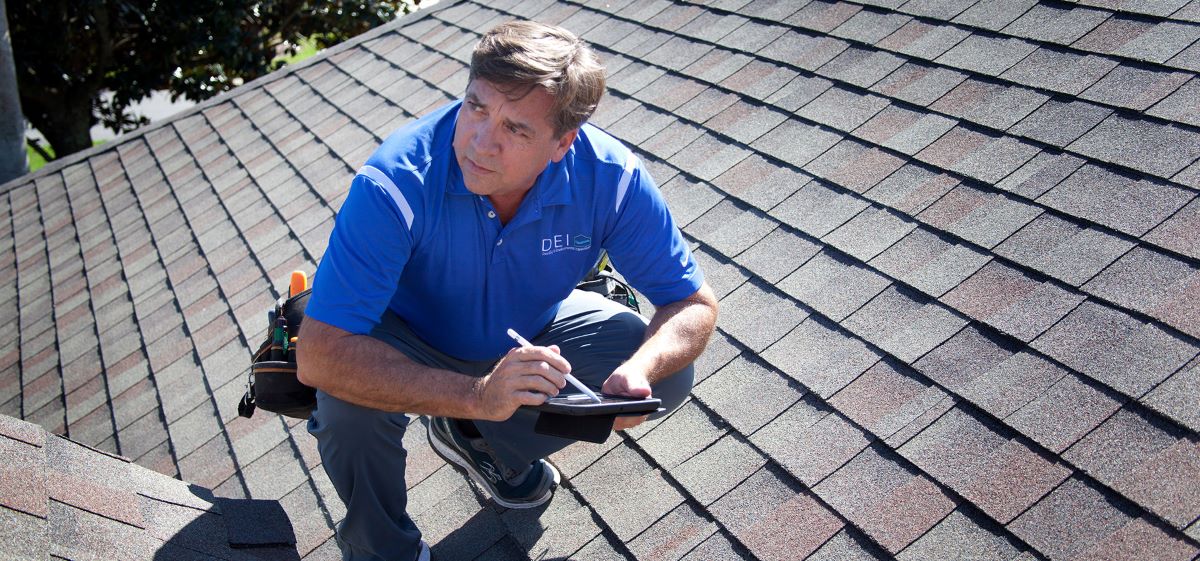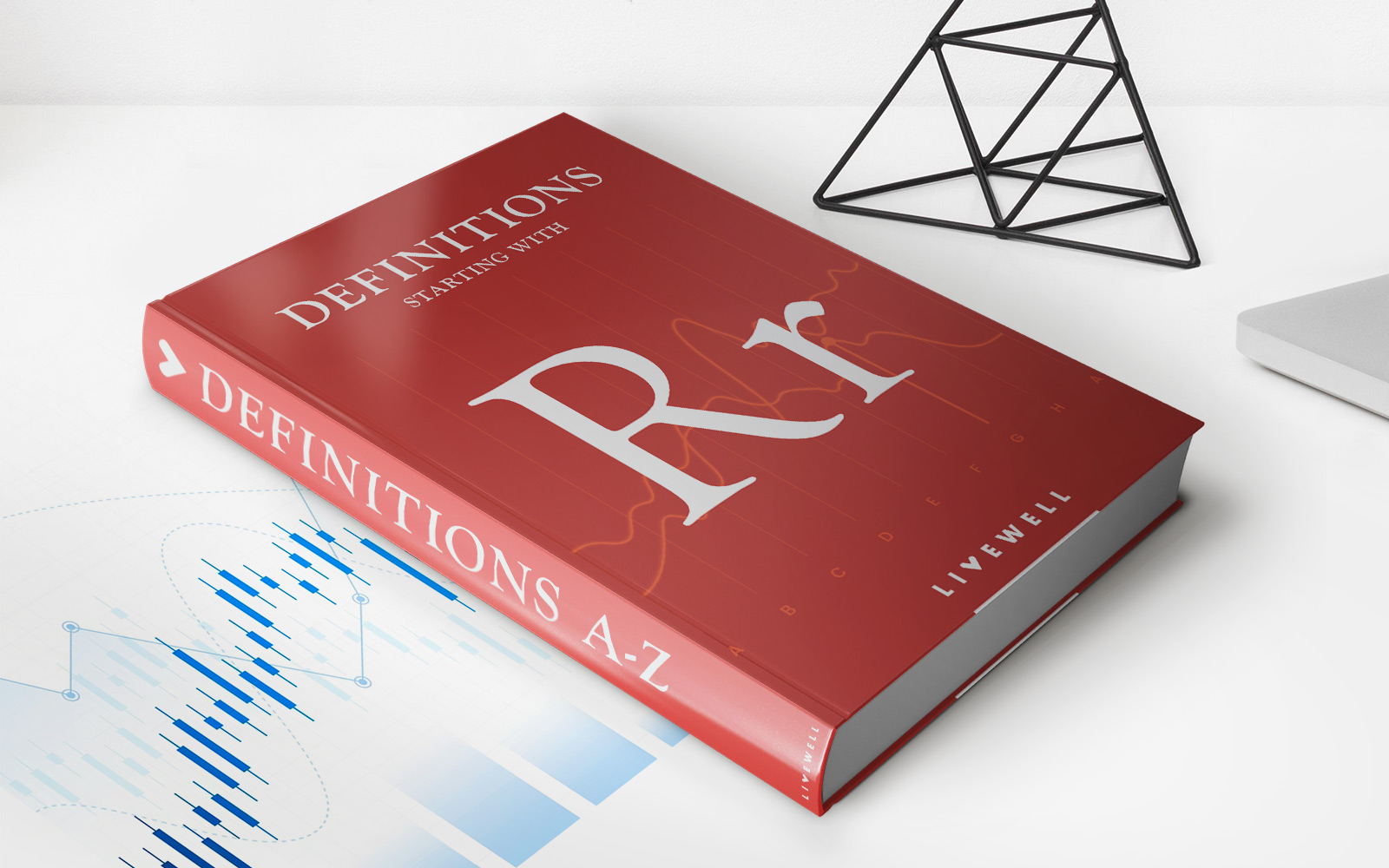Home>Finance>How Often Do Insurance Companies Inspect Homes?


Finance
How Often Do Insurance Companies Inspect Homes?
Published: November 5, 2023
Insurance companies typically inspect homes periodically to assess risks, verify policy details, and ensure adequate coverage. Stay informed about your finance-related needs with routine evaluations from insurance providers.
(Many of the links in this article redirect to a specific reviewed product. Your purchase of these products through affiliate links helps to generate commission for LiveWell, at no extra cost. Learn more)
Table of Contents
- Introduction
- Purpose of Home Inspections
- Importance of Insurance Inspections
- Factors that Determine Insurance Inspection Frequency
- Frequency of Insurance Company Inspections
- Types of Home Inspections
- Reasons for Insurance Company Inspections
- Benefits of Regular Insurance Inspections
- Homeowner’s Responsibilities during Inspections
- Conclusion
Introduction
Welcome to the world of home insurance! When you own a home, it’s crucial to protect your investment and ensure the safety and security of your property. One essential aspect of home insurance is regular inspections conducted by insurance companies. These inspections play a vital role in assessing the condition of your home and determining the level of coverage you need.
In this article, we will delve into the frequency of insurance company inspections and explore the factors that influence the inspection schedule. We will also discuss the different types of inspections conducted by insurance companies and the reasons behind their necessity. Additionally, we will highlight the benefits of regular insurance inspections and the responsibilities that homeowners have during these inspections.
Whether you are a first-time homeowner or someone who has been living in their house for years, understanding insurance inspections is essential. By familiarizing yourself with this process, you will be better equipped to navigate the world of home insurance and make informed decisions to protect your home and belongings.
So, let’s dive in and explore the ins and outs of insurance company inspections for homes!
Purpose of Home Inspections
Home inspections serve a crucial purpose in the realm of insurance. The primary goal of these inspections is to evaluate the condition of a home and assess any potential risks or hazards. Insurance companies conduct these inspections to gather information about a property that helps them determine the appropriate coverage and premiums.
One of the key purposes of home inspections is to identify any pre-existing damage or conditions that could pose a risk for insurance companies. By inspecting a property, insurance companies can assess the likelihood of future claims and adjust their coverage and rates accordingly.
These inspections are especially important when it comes to assessing the structural integrity of a home. Insurance companies want to ensure that the property is in good condition and meets safety standards to minimize the risk of accidents, damage, or liability claims.
In addition to structural evaluations, home inspections also involve assessing other factors such as electrical systems, plumbing, heating and cooling systems, and the overall general condition of the property. Inspectors will also consider factors like the age of the home, building codes, and any recent renovations or repairs.
Another purpose of home inspections is to help homeowners identify potential hazards or preventive measures that could reduce risks and increase the safety of their property. Inspectors may provide recommendations on improvements or repairs that could enhance the condition of the home and reduce the likelihood of insurance claims.
Ultimately, the purpose of home inspections is to provide insurance companies with accurate information about a property’s condition and level of risk. This information is crucial for insurance underwriters to assess the appropriate coverage and premium rates for homeowners.
Importance of Insurance Inspections
Insurance inspections play a critical role in the world of insurance, benefiting both the insurance company and the homeowner. These inspections are important for several reasons:
- Risk Assessment: Insurance inspections help insurance companies assess the level of risk associated with a particular property. By evaluating the condition of the home, its systems, and its location, insurers can determine the likelihood of future claims. This assessment helps them establish appropriate coverage and premiums.
- Accurate Pricing: Through inspections, insurance companies gather essential information about a property to determine its value and potential risks. This information is crucial for setting accurate premiums. Without inspections, insurers would have to rely solely on general information, potentially leading to incorrect pricing and inadequate coverage.
- Preventing Underinsurance: Regular insurance inspections help ensure that homeowners have appropriate coverage for their property. These inspections help identify any changes or additions to the property that may require adjustments to the coverage limits. By preventing underinsurance, homeowners can protect themselves financially in the event of a loss or damage.
- Risk Mitigation: Insurance inspections allow homeowners to address potential risks and hazards that could increase the likelihood of an incident. Inspectors may highlight safety concerns or recommend improvements to reduce risks. By addressing these issues, homeowners can create a safer living environment and potentially lower their insurance premiums.
- Compliance with Policy Requirements: Some insurance policies have specific requirements that homeowners must meet in order to maintain coverage. For example, a policy may require regular inspections or adherence to certain safety standards. By conducting inspections, homeowners can ensure that they are fulfilling their policy obligations and avoid any coverage disputes in the future.
Overall, insurance inspections are crucial for accurate risk assessment, proper pricing, coverage adequacy, and risk mitigation. These inspections benefit both the insurance company, by reducing the likelihood of future claims, and the homeowner, by providing them with the appropriate coverage and creating a safer living environment.
Factors that Determine Insurance Inspection Frequency
The frequency of insurance inspections can vary depending on several factors. Insurance companies consider these factors to determine how often a property should be inspected. Here are some of the key factors that influence the inspection frequency:
- Property Age: The age of a property is an important factor in determining inspection frequency. Older homes may require more frequent inspections due to the increased likelihood of wear and tear, outdated systems, and potential structural issues. Newer homes, on the other hand, may have fewer inspection requirements due to their relatively recent construction.
- Claim History: Insurance companies also consider the claim history of a property when deciding inspection frequency. If the property has a history of frequent claims, insurers may conduct inspections more regularly to assess the risk associated with the property and ensure that the required repairs or improvements have been made.
- Location: The location of the property plays a significant role in determining inspection frequency. Properties in high-risk areas, such as those prone to natural disasters or in areas with higher crime rates, may require more frequent inspections to evaluate potential risks. Insurers need to monitor the condition of these properties more closely to assess the level of coverage needed.
- Insurance Policy Requirements: Some insurance policies may have specific requirements for inspection frequency. For example, a policy may stipulate that a property must be inspected every few years or after a certain period of time. These requirements ensure that homeowners maintain their coverage and meet their policy obligations.
- Changes to the Property: If a property undergoes significant changes, such as renovations, additions, or the installation of new systems, insurance companies may require inspections to assess the impact of these changes on the property’s risk profile. These inspections help determine whether adjustments to coverage or premiums are necessary.
It’s important to note that the specific inspection frequency can vary between insurance companies and policies. Some insurers may have more frequent inspection requirements than others based on their risk assessment strategies and policies. It’s advisable to review your insurance policy or consult with your insurance provider to understand the inspection requirements for your specific situation.
By considering these factors, insurance companies can determine the appropriate inspection frequency for a property. Regular inspections help insurers stay updated on the condition of the property and make informed decisions about coverage and premiums.
Frequency of Insurance Company Inspections
The frequency at which insurance companies conduct inspections can vary based on several factors. While there is no one-size-fits-all answer, here are some general guidelines regarding the inspection frequency:
New Policies: When you initially purchase a home insurance policy, it is common for insurance companies to conduct an inspection before providing coverage. This helps them assess the risk associated with the property and determine appropriate coverage and premiums. In most cases, this initial inspection is a one-time occurrence.
Regular Inspections: After the initial inspection, insurance companies may conduct periodic inspections to stay updated on the condition of the property. The frequency of these inspections can vary but is typically conducted every 1 to 5 years, depending on factors such as property age, location, and claim history. The insurance company will notify you in advance of the scheduled inspection.
Changed Circumstances: If there are significant changes to the property, such as renovations, additions, or updates to systems, insurance companies may require an inspection to assess the impact of these changes on the property’s risk profile. These inspections ensure that the coverage and premiums appropriately reflect the updated condition of the property.
Claims or Losses: If you file a claim or experience a significant loss, insurance companies may conduct an inspection to assess the damage and verify the validity of the claim. These inspections help determine the extent of the loss and the amount of compensation to be provided.
Underwriting Reviews: Insurance companies periodically review policies for underwriting purposes. These reviews may include inspections to ensure that the property and coverage align with the insurer’s underwriting guidelines. The frequency of these reviews can depend on the insurer’s internal policies and risk assessment strategies.
It’s essential to note that the specific inspection frequency can vary between insurance companies and policies. Some insurers may have more frequent inspection requirements based on their risk assessment strategies and policies. It’s advisable to review your insurance policy or consult with your insurance provider to understand the inspection frequency specific to your situation.
Regular insurance inspections are crucial to assess the condition of the property, ensure compliance with policy requirements, and adjust coverage and premiums accordingly. By conducting inspections at appropriate intervals, insurance companies can effectively manage risks and provide accurate coverage and pricing to homeowners.
Types of Home Inspections
Insurance companies employ various types of home inspections to gather specific information about a property. These inspections help assess the risk associated with the property and determine appropriate coverage and premiums. Here are some common types of home inspections conducted by insurance companies:
- General Property Inspection: This type of inspection provides a comprehensive assessment of the overall condition of the property. It covers various aspects, including the structure, exterior, roof, plumbing, electrical systems, heating and cooling systems, and general safety. The goal is to identify potential risks or hazards that could affect the property’s insurability.
- Roof Inspection: Roof inspections focus solely on evaluating the condition and integrity of the roof. Inspectors examine the roofing materials, flashing, gutters, and overall structural soundness. This inspection aims to identify any existing or potential issues, such as leaks, damage, or deterioration, that could result in future insurance claims.
- Electrical Inspection: Electrical inspections primarily assess the safety and functionality of the electrical systems within a property. Inspectors examine the electrical panel, wiring, outlets, switches, and other components to ensure they meet code requirements. The goal is to identify any faulty wiring, outdated systems, or potential fire hazards.
- Plumbing Inspection: Plumbing inspections focus on assessing the condition and functionality of the plumbing systems in a property. Inspectors check for leaks, water pressure, and functionality of fixtures, as well as the overall plumbing infrastructure. This inspection is essential to identify any existing or potential issues that could result in water damage or plumbing-related claims.
- Heating, Ventilation, and Air Conditioning (HVAC) Inspection: HVAC inspections evaluate the heating, cooling, and ventilation systems within a property. Inspectors assess the functionality, efficiency, and safety of the HVAC systems. This inspection helps identify any malfunctioning components, potential health hazards, or energy efficiency concerns.
- Security System Inspection: Some insurance companies may conduct inspections specifically for properties with security systems. Inspectors assess the functionality, coverage, and effectiveness of the installed security system. This inspection helps determine if additional security measures are necessary and if any discounts on insurance premiums apply.
These are just a few examples of the types of home inspections conducted by insurance companies. The specific type of inspection required will depend on factors such as the insurance company’s policies, the type of coverage being provided, and any specific concerns or requirements for the property.
It’s important to note that these inspections are separate from any inspections required by local building codes or other regulatory bodies. Insurance company inspections focus specifically on assessing the risk associated with the property and determining the appropriate coverage and premiums.
Reasons for Insurance Company Inspections
Insurance company inspections serve several important purposes. These inspections help insurance companies gather information about a property, assess its risk profile, and make informed decisions about coverage and premiums. Here are some key reasons why insurance companies conduct inspections:
- Risk Assessment: Insurance inspections allow companies to assess the level of risk associated with a property. By inspecting the property, insurance companies can evaluate the structural integrity, safety features, and overall condition of the home. This assessment helps them determine the likelihood of future claims and adjust coverage and premiums accordingly.
- Underwriting: Inspections provide valuable information during the underwriting process. Insurance companies rely on inspection reports to gather accurate data about the property, its systems, and any potential hazards. This information helps underwriters assess the insurability of the property and set appropriate coverage limits and premiums.
- Verification of Information: Insurance inspections help verify the accuracy of the information provided by the homeowner during the application process. Inspectors can confirm the details about the property, such as its age, features, and condition, and ensure that they align with the information provided in the insurance application. This verification is essential to prevent fraud and ensure that policies are based on accurate information.
- Identify Hazards or Risks: Inspections help insurance companies identify potential hazards or risks that could result in future claims. Inspectors assess various aspects of the property, including the structure, electrical systems, plumbing, and other potential sources of damage or liability. By identifying these risks, insurance companies can take proactive measures, such as recommending improvements or adjustments to coverage, to mitigate potential losses.
- Determine Coverage and Premiums: The information gathered during inspections plays a crucial role in determining the appropriate coverage and premiums for a property. Insurers consider factors such as the condition of the home, its systems, any past claims, and the potential risk profile when setting coverage limits and determining premium rates. Inspections help ensure that the coverage aligns with the property’s actual risk and meets the homeowner’s needs.
- Compliance with Policy Requirements: Some insurance policies may have specific requirements that homeowners must meet to maintain coverage. Inspections help ensure that the property meets these requirements, such as having adequate safety features or adhering to specific building codes. By conducting inspections, insurance companies can ensure that homeowners are fulfilling their policy obligations and maintaining the insurability of their property.
Insurance company inspections provide valuable information that helps insurers assess risk, verify information, identify hazards, and ensure appropriate coverage and premiums. By conducting inspections, insurance companies can make informed decisions and provide reliable coverage to homeowners.
Benefits of Regular Insurance Inspections
Regular insurance inspections offer several benefits for both insurance companies and homeowners. These inspections help ensure the safety, integrity, and insurability of the property. Here are some key benefits of regular insurance inspections:
- Identifying Potential Risks: Inspections allow for the identification of potential risks or hazards in a property. Inspectors can assess structural issues, safety concerns, outdated systems, or other conditions that could lead to accidents, damage, or liability claims. Identifying these risks early on enables homeowners to address them promptly and reduce the probability of future incidents.
- Preventing Underinsurance: Regular inspections help homeowners assess the adequacy of their insurance coverage. Inspectors can determine if any changes or additions to the property have occurred that may require adjustments to the coverage limits. By ensuring that the coverage accurately reflects the value of the property, homeowners can avoid being underinsured and protect themselves financially in the event of a loss.
- Enhancing Safety: Inspections provide an opportunity to address safety concerns and make necessary improvements. Inspectors can identify issues like faulty wiring, plumbing leaks, or inadequate security systems that could pose risks to occupants or the property itself. By addressing these issues, homeowners can create a safer living environment for themselves and reduce the likelihood of accidents or damages.
- Preserving Property Value: Regular inspections help maintain the overall condition and value of a property. By identifying and addressing issues early on, homeowners can prevent minor problems from escalating into major, costly repairs. This proactive approach helps preserve property value and ensures that the property remains in good condition for the long term.
- Minimizing Disputes: Insurance inspections establish a clear record of the property’s condition at the time of inspection. This documentation can help minimize disputes between homeowners and insurance companies regarding pre-existing damage or the need for repairs. Having an inspection report as evidence can expedite the claims process and ensure a fair resolution in case of a loss.
- Optimizing Coverage and Premiums: Regular inspections enable insurance companies to accurately assess the risk associated with a property. By having up-to-date information about the property’s condition, insurers can adjust coverage and premiums accordingly. This ensures that homeowners have adequate coverage for their needs and that premiums are based on accurate risk assessments.
Overall, regular insurance inspections provide valuable benefits for both homeowners and insurance companies. By addressing potential risks, enhancing safety, preserving property value, and ensuring accurate coverage and premiums, these inspections contribute to peace of mind and financial protection for homeowners.
Homeowner’s Responsibilities during Inspections
During insurance inspections, homeowners have certain responsibilities to ensure a smooth and productive process. Here are some key responsibilities that homeowners should be aware of:
- Cooperation: The homeowner should cooperate fully with the inspector and provide them with access to all areas of the property. This includes areas such as the attic, crawl spaces, and utility rooms. Being present during the inspection can also be beneficial as it allows the homeowner to address any questions or concerns directly.
- Maintenance and Repairs: It is the homeowner’s responsibility to maintain the property in good condition. Before the inspection, homeowners should address any known issues or make necessary repairs to ensure the property is in the best possible shape. This includes fixing leaky faucets, repairing broken windows, and replacing faulty electrical outlets, among other maintenance tasks.
- Documentation: Homeowners should keep records of any repairs, renovations, or upgrades made to the property. Having this documentation on hand during the inspection can help provide evidence of improvements and can potentially have a positive impact on the assessment of the property’s condition.
- Safety Precautions: Homeowners should ensure that their property meets basic safety standards. This includes having functional smoke detectors, fire extinguishers, and carbon monoxide detectors installed. Homeowners should also address any safety hazards, such as loose handrails or exposed wiring, prior to the inspection.
- Accurate Information: Homeowners should provide accurate and complete information about the property during the inspection process. This includes disclosing any previous insurance claims, renovations, or changes made to the property. Providing truthful and transparent information helps establish trust with the insurance company and ensures that the coverage is appropriate.
- Ask Questions: If homeowners have any questions or concerns during the inspection, they should feel free to ask the inspector for clarification. The inspection is an opportunity to gain insights into the condition of the property and any potential risks. Homeowners can use this opportunity to learn more about their property and seek recommendations for improvements or maintenance.
Being proactive and responsible during insurance inspections can help homeowners ensure an accurate assessment of their property’s condition. By cooperating with the inspector, addressing maintenance and safety concerns, and providing accurate information, homeowners can contribute to a smooth and successful inspection process.
Conclusion
Insurance company inspections are a crucial aspect of maintaining proper coverage and ensuring the safety and integrity of your home. These inspections help assess the condition of the property, identify potential risks, and determine the appropriate insurance coverage and premiums. By understanding the factors that influence inspection frequency, the types of inspections conducted, and your responsibilities as a homeowner, you can navigate the insurance inspection process with confidence.
Regular insurance inspections offer numerous benefits, including identifying potential risks, preventing underinsurance, enhancing safety, preserving property value, minimizing disputes, and optimizing coverage and premiums. By addressing issues proactively and maintaining your property in good condition, you can mitigate risks and potentially lower your insurance premiums.
As a homeowner, it is important to recognize your responsibilities during insurance inspections. Cooperating with the inspector, maintaining your property, providing accurate information, and addressing safety concerns are essential steps to ensure a smooth inspection process and accurate assessment of your property’s condition.
By staying informed about insurance inspection requirements, maintaining your property, and promptly addressing any recommended improvements or repairs, you can protect your home and maximize its value. Regular inspections offer peace of mind, knowing that your insurance coverage accurately reflects the risk profile of your property and that you have taken steps to mitigate potential risks.
Remember, insurance inspections are not just a formality; they serve a vital purpose in safeguarding your home and ensuring that you have adequate coverage. By staying proactive and responsible, you can contribute to a successful inspection process and protect your home for years to come.














